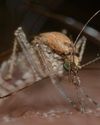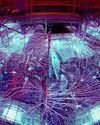Phyto-Remediation: Cleaning Up Naturally
Scientific India
|March-April 2019
In many cases the industrious processes of man have left behind contaminants in the soil. These contaminants pose a significant threat to the health of not just humans but to all natural life in the surrounding environment.
-

This problem is made worse when the contaminants enter the food chain or the underlying water table where they spread and become hard to manage. The most common contaminants present in the soil are; heavy metals, industrial chemicals, pesticides and crude oil all of which have been shown to be toxic to wildlife and humans. There have been substantial changes by governments and industries to limit and even remove the need for these harsh chemicals (most notably the ban on polychlorinated biphenyls), however much of the damage has already been done as so emphasis is on the removal of these toxins. The traditional methods for removing contaminants are based around man-made technologies and processes to either degrade or extract the toxins in the soil. In the past methods such as soil removal, soil oxidation and land fill have been used to decontaminate sites. These methods are; labor intensive, costly and in many cases they can be relatively damaging to the environment. This has caused the social and political push towards cleaner and environmentally sustainable methods. Plants and trees have the natural ability to degrade and absorb metals and compounds from the soil, it is in fact the way in which they obtain much of their essential nutrients. This capability can be exploited and utilised to extend to contaminants, and was conceptualised by Dr. IlyaRaskin as “Phytoremeditaion”
Denne historien er fra March-April 2019-utgaven av Scientific India.
Abonner på Magzter GOLD for å få tilgang til tusenvis av kuraterte premiumhistorier og over 9000 magasiner og aviser.
Allerede abonnent? Logg på
FLERE HISTORIER FRA Scientific India
Scientific India
Japanese physicists were the first to measure the most tolerant entanglement state, the W state
There are many unusual things that happen in the world of quantum physics.
3 mins
September - October 2025

Scientific India
The Fifth Force: Could It Unlock the Secret of Dark Matter?
What if the universe is powered by a force we've never seen before? For centuries, science has explained nature with four fundamental forces.
3 mins
September - October 2025

Scientific India
A flu test you can chew
As flu season nears in the northern hemisphere, scientists are exploring a surprising new way to detect infection: through taste.
1 mins
September - October 2025

Scientific India
Lab-Grown Kidney Brings Artificial Organ Dream Closer to Reality
In a major leap toward bioengineered organ replacement, scientists have successfully grown human kidney 'assembloids' in the laboratory that mimic key structural and functional features of natural kidneys.
1 min
September - October 2025

Scientific India
Your pumpkin might be hiding a toxic secret
Pumpkins, squash, zucchini, and other members of the gourd family have a surprising trait: they can take up pollutants from the soil and store them in their edible parts.
1 mins
September - October 2025

Scientific India
2025 Nobel Prize in Physics Reveals Quantum Secrets in Superconducting Circuits
The 2025 Nobel Prize in Physics has been awarded to John Clarke, Michel H. Devoret, and John M. Martinis for their pioneering experiments that brought quantum mechanics from the invisible atomic world to the macroscopic scale a system large enough to hold in your hand.
1 mins
September - October 2025

Scientific India
Genomic Evidence Redefines the Evolutionary Age of Mosquitoes
A new genetic analysis has shaken up what we thought we knew about one of humanity's most notorious pests the mosquito.
1 min
September - October 2025

Scientific India
Nobel Prize in Chemistry 2025: Building Molecular Architectures with Room to Breathe
In a scientific breakthrough that bridges molecular design with planetary-scale problems, the 2025 Nobel Prize in Chemistry has been awarded to Susumu Kitagawa, Richard Robson, and Omar Yaghi.
1 mins
September - October 2025

Scientific India
Guardians of Immunity: Nobel Prize 2025 Honors Discoveries that Keep the Immune System in Check
The 2025 Nobel Prize in Physiology or Medicine has been awarded to Mary E. Brunkow, Fred Ramsdell, and Shimon Sakaguchi for their groundbreaking discoveries in the field of peripheral immune tolerance a crucial mechanism that prevents the body's immune system from turning against itself.
1 mins
September - October 2025

Scientific India
'Is cold nuclear fusion feasible?
In early May 1989, two chemists from the University of Utah, Pons and Fleischmann, arrived in Washington, U.S.A. The aim is to present their findings to members of the US Congress.
3 mins
September - October 2025
Translate
Change font size

